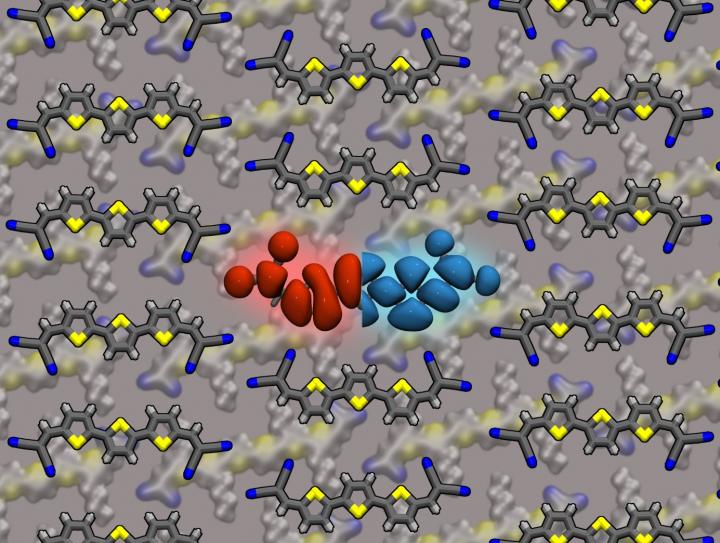Tuning organic energy gaps

German researchers develop novel approach for band gap engineering organic semiconductors
Organic semiconductors have earned a reputation as energy efficient materials in OLEDs used in large area displays. In these and solar cells, a key parameter is the energy gap.
For inorganic materials you engineer the band gap by substituting atoms in the material. This allows for a continuous tunability as, for example in AlGaAs semiconductors. Unfortunately, this is not transferable to organic cmpound semiconductors.
Now with their latest publication in Nature Materials, scientists at the Center for Advancing Electronics Dresden (cfaed, TU Dresden) and at the Cluster of Excellence e-conversion at TU Munich together with partners from University of Würzburg, HU Berlin, and Ulm University have found a way to engineer the energy-gap for organic semiconductors by blending.
For inorganic semiconductors, the energy levels can be shifted towards one another by atomic substitutions, thus reducing the band gap. In contrast, band structure modifications by blending organic materials can only shift the energy levels concertedly either up or down. This is due to the strong Coulomb effects that can be exploited in organic materials, but this has no effect on the gap. "It would be very interesting to also change the gap of organic materials by blending, to avoid the lengthy synthesis of new molecules", says Karl Leo from TU Dresden.
The researchers now found an unconventional way by blending the material with mixtures of similar molecules that are different in size. "The key finding is that all molecules arrange in specific patterns that are allowed by their molecular shape and size", explains Frank Ortmann, a professor at TU Munich and group leader at the Center for Advancing Electronics Dresden (cfaed, TU Dresden). "This induces the desired change in the material´s dielectric constant and gap energy."
The group of Frank Ortmann was able to clarify the mechanism by simulating the structures of the blended films and their electronic and dielectric properties. A corresponding change in the molecular packing depending on the shape of the blended molecules was confirmed by X-ray scattering measurements, performed by the Organic Devices Group of Stefan Mannsfeld at cfaed. The core experimental and device work was done by Katrin Ortstein and her colleagues at the group of Karl Leo, TU Dresden.
The picture above shows how varying the ratio of 3T molecules (foreground) and 6T molecules (indicated in the background) in the blend allows tuning the gap continuously.
'Band gap engineering in blended organic semiconductor films based on dielectric interactions' by Katrin Ortstein et al; Nature Materials: 10 June, 2021


































